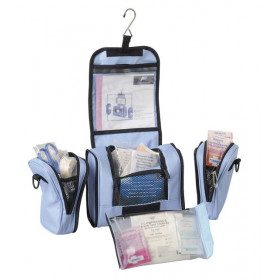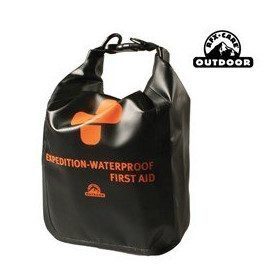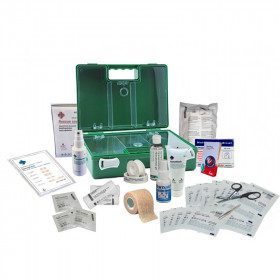Choosing and managing your first aid kit for sailing

Carrying a first aid kit when sailing is essential for the safety of the crew
Whether it is to treat minor injuries or to intervene in the case of more serious trauma, it is essential to carry a first aid kit when sailing on a pleasure boat. Indeed, you should never forget that :
- Sailing on a boat can present more "risks" than an activity on land: boat "moving", salty environment, increased exposure to the sun, activity on board causing injuries (fishing for example), etc ..
- The intervention of the emergency services can take time and it is necessary to be able to provide first aid on board before the arrival of the specialists. This time factor is exponential depending on the sailing area and the distance from the coast.
Aware of these risks, the skipper responsible for the health (and life) of his crew members will have to :
- Be trained in first aid (or make sure he has someone trained on board): the PSC1 is the minimum necessary, but we recommend PS Mer training, which is better suited to interventions in pleasure boating.
- To have a complete first aid kit adapted to the risks and the distance
To facilitate your task and ensure your safety, we have designed 3 kits according to your type of navigation.
Regulations and good practical sense
In pleasure boating, the reference text (Division 240 - Order of 6 May 2019) only requires a first aid kit beyond a distance of 6 miles from a shelter (the so-called "semi-offshore" or "offshore" zones).
In view of the above, we nevertheless recommend that a first aid kit be systematically carried on board a pleasure craft. For this purpose, we have designed 3 kits according to your type of navigation:
The kit for coastal navigation It is the minimum required for day trips on open hull motorboats, small fishing boats, day sailboats and more generally all small boats that can navigate in coastal areas (VNM, sea kayaks, etc.)
The kit for offshore navigation (semi-offshore area) D240 : it complies with the regulatory obligations (D240) and is the most suitable for all habitable pleasure craft, whatever the cruising mode (coastal cruising, coastal cruising or offshore crossing within 60 miles of a shelter).
The kit for deep-sea navigation The first aid kit is also in accordance with the D240, it is much more complete and adapted to high sea navigation (crossings of more than 48 hours and more than 60 miles from a shelter)
Add the necessary medication
The first aid kit includes medical supplies that will last for a long time. However, it is necessary to complete it with the essential medicines according to the type of navigation envisaged.
Each of our first aid kits includes a list of additional products to take on board: this list has been drawn up by the Maritime Medical Consultation Centre.
What to do before departure?
Before departure, you should check the expiry dates of the products. In addition, for ocean sailing, it is useful for each crew member to complete a medical information sheet mentioning their medical history.
Note that
- For generic medicines, it is more difficult to remember their benefits. It is therefore important to note their usefulness.
- Even if your symptoms seem benign, a teleconsultation with the doctor at the Maritime Medical Communication Centre is necessary because the medicines can only be taken on medical prescription.
Some advice and recommendations
For the storage of your kit, medicines can be taken out of their original boxes, mentioning the expiry dates and keeping their instructions. Ideally, the products in your medicine box should be stored in small jars or pouches away from humidity, light and temperature variations that could damage their active ingredients.
For your safety, the separate compartments avoid confusion and allow the replacement of expired products. In first aid, it is imperative to find medicines easily. They will be grouped in a part of the medicine box and identified by a colour or classified according to the type of illness.
.png)
Linked products









 By Marie de Picksea
By Marie de Picksea